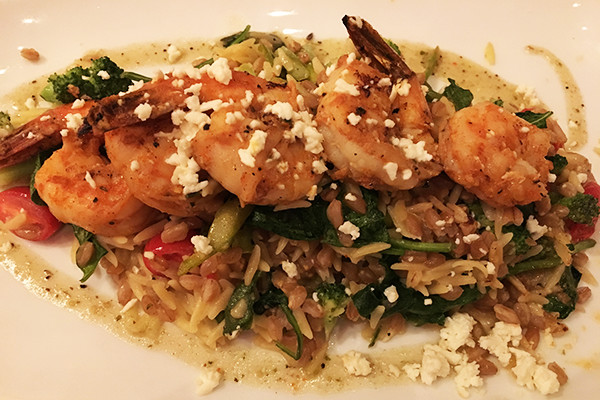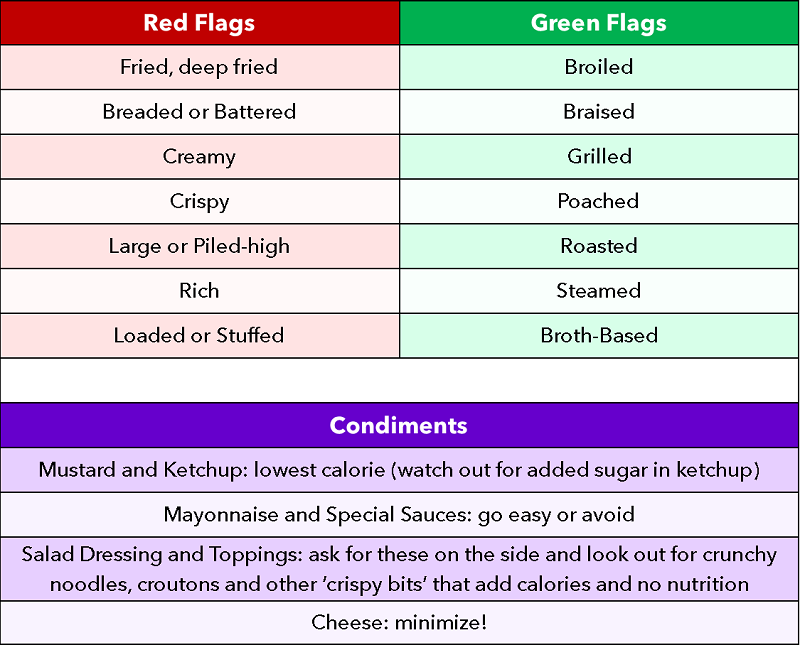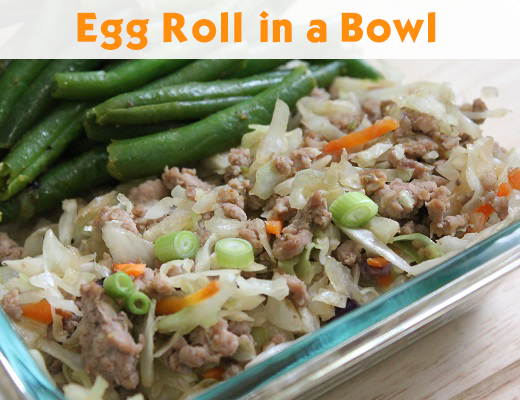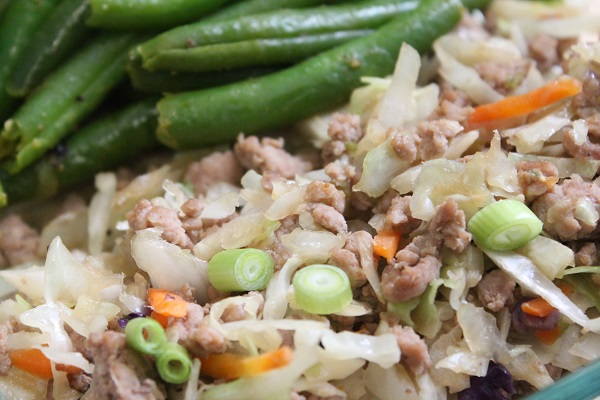The average American household spends about 12.5% of income on food, with a shrinking margin of difference between money spent on groceries and at restaurants (57% versus 43%). With over 1 million restaurant establishments in the United States, it’s no wonder that dining out is now the norm rather than a luxury. This new trend, however, is not only hurting our wallets, it’s impacting our health as well.
When it comes to eating out, it’s important to ask yourself a few questions.
- How often do you eat out? Are you eating out the national average of 4.5 times per week, once or twice a month, or a few times a year for special occasions?
- What are the main reasons you eat out? Do you travel for work or regularly take customers out to eat? Do you not have time (or know how) to cook?
- What is your biggest challenge when eating out? Are you tempted by all things fried and cheesy? Does dessert get you every time? Do you tend to eat more than you would at home?
The answers to these questions can help you tailor your strategies for eating healthy while eating out, which can be a challenge even for the most health-conscious individuals. If you find yourself eating out on a regular basis, you’ll need to be more mindful of your choices compared to someone who eats out occasionally. Use the techniques and tips below to help recreate your restaurant plates and fit eating out into a healthy eating plan once again.
Decode your dining menus with these tips for recreating restaurant plates #saslife Click To TweetPlan ahead
If you know you’re going to be eating out ahead of time, ask yourself WHERE will I be eating, WHEN will I be eating and WHAT healthy choices will be available?
WHERE: Restaurant selection is key. Choose restaurants that offer vegetables! It makes it much easier to build a healthy, balanced meal if you have more vegetable options- it’s a bit more challenging at a fried seafood house or BBQ joint where vegetables are almost non-existent (or only fried or smothered in mayo). If you don’t have control over where you’ll be eating, do the best you can with what’s available.
WHEN: If you know you’re going out for dinner, don’t skip meals earlier in the day in an attempt to “save up” for that meal. This strategy backfires every time and you’ll end up consuming more calories than you would if you had continued with your normal eating pattern. Instead, can choose lighter meals earlier in the day such as boiled eggs and a piece of fruit for breakfast and a grilled chicken salad for lunch but, please, don’t skip meals and have your restaurant meal be the first (or only) meal of the day!
WHAT: Read menus and nutrition information online ahead of time. Have a few pre-selected items in mind that fit into your eating plan BEFORE you arrive to help avoid tempting impulse choices at the restaurant. If you don’t have to time before you arrive or don’t know where you’re going in advance, check out the calorie count information that’s now posted on many menus for guidance on healthier choices.
When deciding what to eat, peruse the entire menu and thoroughly read all descriptions, being careful to not fall prey to tempting terminology. Beware of menu items that sound too good to be true (they probably are!). For example, some salads can have more fat and calories than a juicy cheeseburger with fries. Watch for “red flags” on the menu descriptions and be careful with condiments (see table below for examples).
Politely resign from the Clean Plate Club
Restaurant portions are easily 2-3 times what we actually need so turn in your Clean Plate Club membership card today! To better “budget” your food and ensure you don’t overeat:
- Divide your plate in half before eating, putting the rest in a to-go container.
- Order lunch-sized portions or “small plates” if available.
- Share an entrée.
- Choose a healthy appetizer (ie- grilled shrimp) and add 2 side veggies, 1 side veggie and a salad or 1 side veggie a starch like wild rice or a sweet potato.
- Decline the bread or chip basket and say no thanks to dessert.
- Eat slowly and savor and enjoy the meal.
Modify Your Meals- Go for Balance!
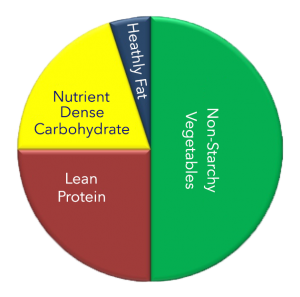 When eating out, the best strategy is to create as close to a volumetric plate as possible. What’s a volumetric plate? It’s one with lots of vegetables- half a plate worth to be exact. Most restaurant meals do not automatically come plated this way, so take charge and politely ask to make some modifications to have a better balanced meal.
When eating out, the best strategy is to create as close to a volumetric plate as possible. What’s a volumetric plate? It’s one with lots of vegetables- half a plate worth to be exact. Most restaurant meals do not automatically come plated this way, so take charge and politely ask to make some modifications to have a better balanced meal.
- SUB SIDES! Ask for extra veggies instead of mashed potatoes or French fries, go without the bun, ask to have your sandwich over salad greens instead of in bread, etc. The more veggies, the better!
- Ask your server if the food could be prepared differently (baked or steamed instead of fried, olive oil instead of excess butter, etc.).
- Ask for sauces and condiments on the side so you can control how much you use.
And be careful with beverages! It’s easy to double the calories in a meal by choosing sweetened beverages, especially with a seemingly always full glass thanks to free refills. Choose water or unsweet tea as often as possible and limit soda and other sweetened drinks.
You are in charge!
Eating healthy while eating out can be done! It just takes a little planning and a conscious effort. The bottom line is YOU ARE IN CHARGE! Remember, you are the customer and you have control over what foods you eat (and don’t eat).
Here are some examples of real-life restaurant meals that fit into a healthy eating plan, using the strategies above.
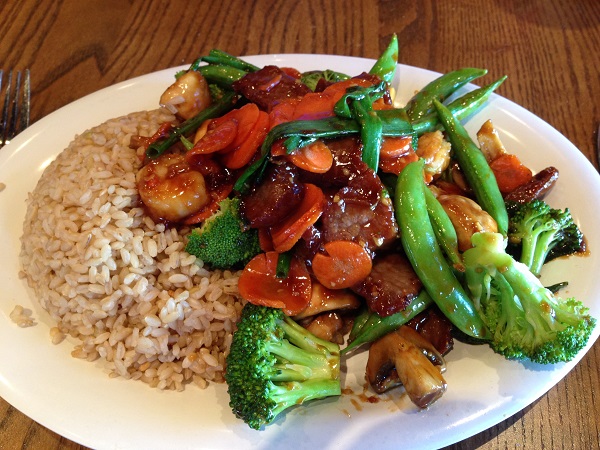
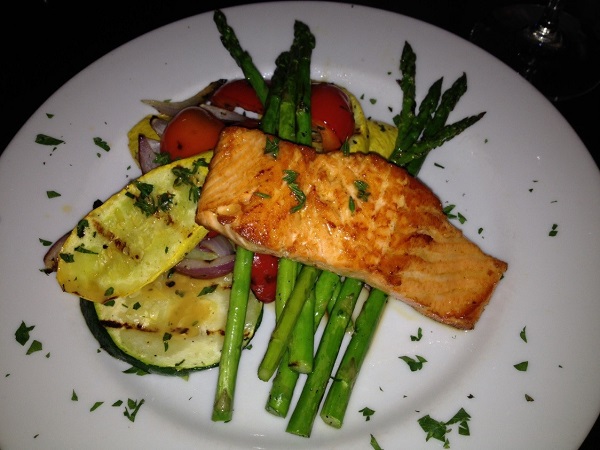
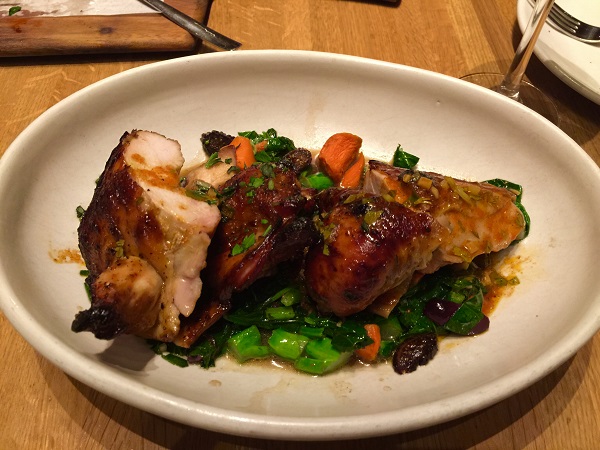
Egg Roll in a Bowl
Serves 5
Recipe From: Mostly Homemade Mom
Instead of ordering take-out tonight, try this "take-out fake-out" recipe that your entire family will love! All the flavors of an egg roll without the fried wrapper.
Ingredients
1 ¼ lbs ground pork
2 Tbsp sliced green onion, divided
1 bag (14oz) dry coleslaw mix- shredded cabbage and carrots
5 cloves garlic, minced
⅓ cup soy sauce
1 tsp ginger
salt and pepper, to taste
Directions
- Combine pork, 1 Tbsp green onion, salt and pepper in a large deep skillet. Cook until browned.
- Whisk together garlic, soy sauce and ginger in a small bowl. Set aside.
- Drain excess fat from pork once done and return to skillet.
- Add coleslaw mix to skillet and stir to combine.
- Stir in sauce and continue cooking until cabbage is wilted but still a bit crunchy, about 5 minutes.
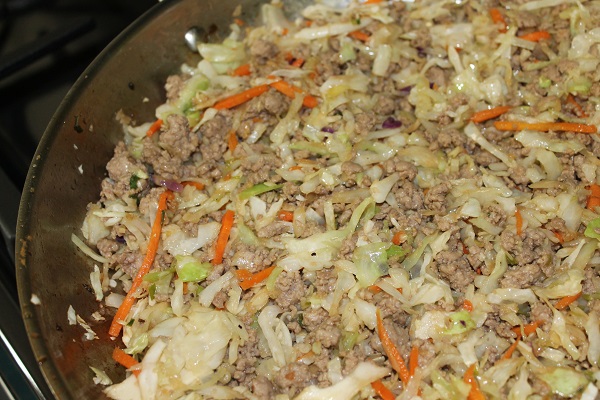
- Top with sliced green onions.
Make it a Meal: Serve with sautéed green beans or any other vegetable of choice for a great lower carb meal or pair this with a cooked, intact grain like brown rice or quinoa.
Click here for a printer-friendly version of this recipe.
Click here for a printer-friendly version of this blog post.
